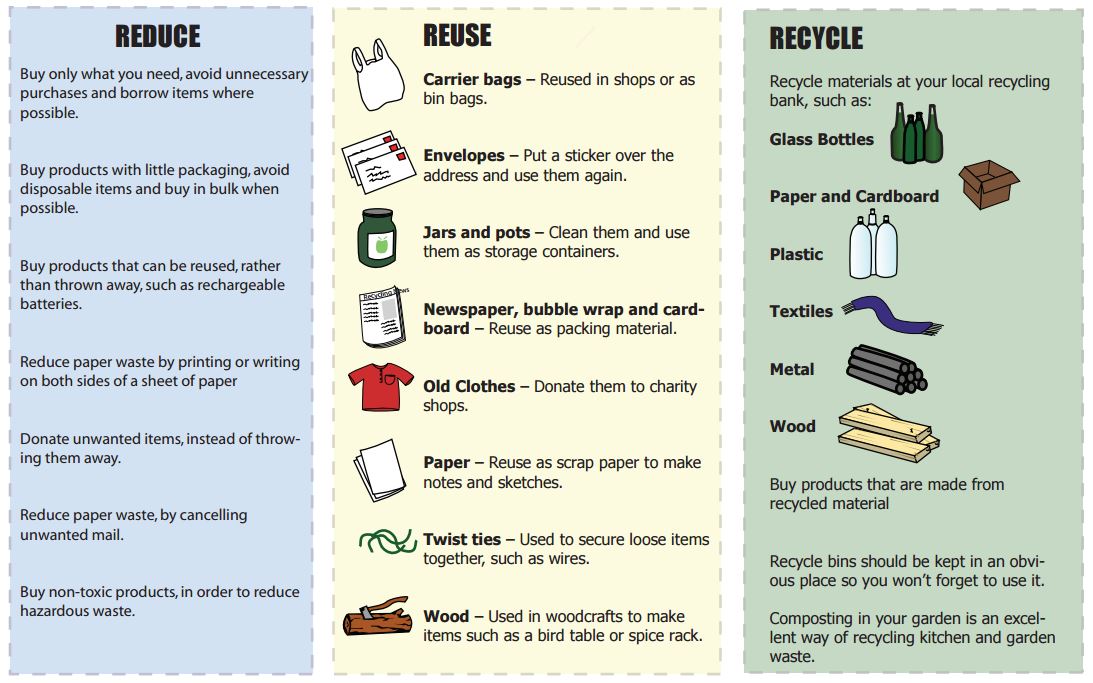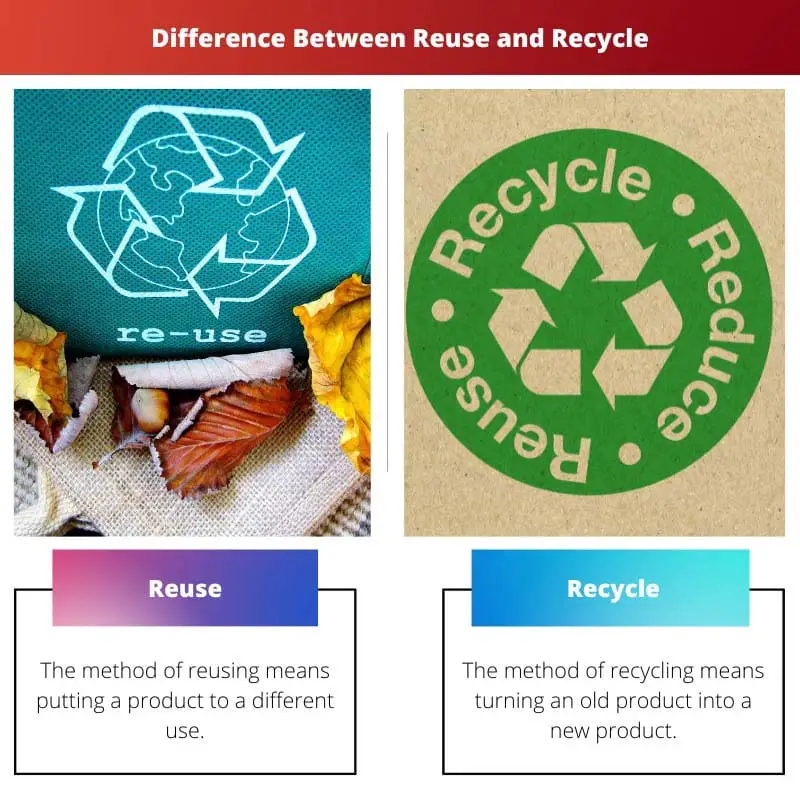Difference Between Reuse And Recycle With Comparison Chart Key

Difference Between Reuse And Recycle With Comparison Chart Key Keski The rule is, reduce, reuse and recycle, often known as 3r’s. while reuse implies using the same item or natural resource, again and again, recycle alludes to the transformation of waste item to a useful one. While recycling involves processing waste materials to create new products, reusing focuses on finding alternative uses for existing items. in this article, we will explore the attributes of recycling and reusing, highlighting their benefits, challenges, and their overall impact on the environment.

Difference Between Reuse And Recycle With Comparison Chart Key Keski Discover the differences between reusing and recycling, their environmental benefits, and how both practices are essential for a sustainable future. Reuse reduces the need for new raw materials, minimizes waste, and consumes significantly less energy. in contrast, recycling, while still beneficial, involves processes that consume energy and can produce waste and pollutants. While both terms are often used interchangeably, they have distinct meanings and implications. this article aims to clarify the difference between reuse and recycle and highlight their significance in waste management and resource conservation. Reuse involves using a product multiple times before discarding it, whereas recycling involves breaking down and processing materials to create new products. reusing items conserves more energy and resources than recycling, as recycling processes can be energy intensive.

Difference Between Reuse And Recycle With Comparison Chart Key Keski While both terms are often used interchangeably, they have distinct meanings and implications. this article aims to clarify the difference between reuse and recycle and highlight their significance in waste management and resource conservation. Reuse involves using a product multiple times before discarding it, whereas recycling involves breaking down and processing materials to create new products. reusing items conserves more energy and resources than recycling, as recycling processes can be energy intensive. Reuse extends the lifecycle of a product, delaying its entry into the waste stream. recycling transforms waste into new products, promoting a circular economy but often with a limit on how many times a material can be recycled. Key difference: the concept of reuse is when a product that is newly purchased is put to another use after the first use is completed. recycling is processing of used materials (waste) into new products to prevent waste of potentially useful materials. Here are the key differences: involves taking an item, dividing it into its individual materials, and reprocessing it to create a different material or item. aims to cut down waste and ensure useful resources are converted into new products, rather than being wasted after a single use. In this article, i’ll break down the key differences between reuse and recycle, so you can make more informed choices when it comes to reducing waste and preserving our planet.
Comments are closed.